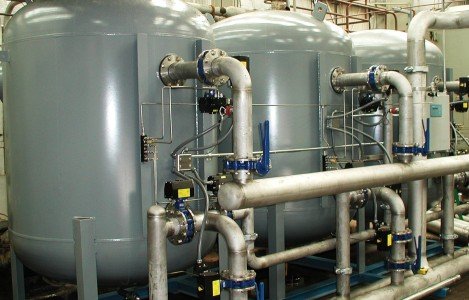
What Is Screening In Wastewater Treatment
Title: Understanding Screening in Wastewater Treatment: A Comprehensive Guide
Introduction:
Wastewater treatment is an essential process to maintain public health and environmental quality. As urban populations grow and industrial activities expand, effective wastewater management has never been more crucial. One of the initial and critical stages of wastewater treatment is screening. This seemingly simple process plays a pivotal role in ensuring the efficiency and success of the entire treatment cycle. This article delves into the intricacies of screening in wastewater treatment, exploring its importance, methods, technologies involved, and future prospects.
Understanding Screening in Wastewater Treatment:
1. The Role of Screening:
Screening is the first line of defense in wastewater treatment. It involves the removal of large objects and debris from incoming wastewater. This process protects pumps and other equipment in the treatment facility from damage or blockage and enhances the effectiveness of subsequent treatment processes. The primary goal of screening is to protect the downstream processes and improve the overall efficiency of the treatment plant.
2. Types of Waste Found in Wastewater:
Before understanding the methods of screening, it’s important to identify the types of waste typically found in wastewater. They include:
- Physical Debris: Items like plastics, papers, rags, cans, and bottles.
- Organic Matter: Human waste, food residues, leaves, and other biodegradable materials.
- Inorganic Solids: Grit, sand, and small stones.
- Chemical Contaminants: Industrial discharges and household chemicals.
3. Importance of Screening:
Screening is crucial for several reasons:
- Equipment Protection: By removing large solids, screens prevent damage to pumps, valves, and pipelines, which can be costly to repair.
- Process Efficiency: Removing debris early reduces clog backup risks and helps maintain steady water flowrates essential for other treatment stages.
- Cost Reduction: By preventing mechanical failures and enhancing downstream processes, screening lowers operational costs.
Methods of Screening:
Screening approaches can vary based on the treatment facility size, the type of wastewater, and specific project needs.
1. Manual Screening:
Historically, many small treatment plants employed manual screening methods. These involve the use of simple tools like rakes or manual screens to remove debris. Manual screening is labor-intensive and generally considered for smaller systems or where automation is not feasible.
2. Mechanical Screening:
Fixed Screens:
- Bar Screens: One of the most commonly used types, bar screens are composed of vertical bars spaced at intervals. They capture large debris while allowing water to pass through.
- Coarse Screens: These are used for the initial phase of screening and capture larger particles – typically used in primary treatment.
Moving Screens:
- Rotary Drum Screens: These consist of a rotating drum with a screen on its surface. As water flows through, debris is trapped on the outside of the drum while the cleaned water passes through.
- Disc Screens: Similar to drum screens but composed of a series of discs. The rotating action separates objects from the water.
Fine Screens:
- Micro Screens: Used to capture smaller particles after larger debris has been removed. They utilize fine mesh materials.
- Step Screens: Comprising multiple moving steps, they trap smaller particles not caught by bar screens.
3. Advanced Screening Techniques:
Ultrasonic Screens: Utilizing high-frequency sound waves, these screens disrupt and remove fine particles suspended in waste streams.
Membrane Screens: They use fine microfiltration membranes to achieve an advanced level of screening efficiency.
Role in Tertiary Treatment: While primarily a preliminary treatment, advanced screening technologies are now being incorporated into tertiary treatment setups, further purifying effluent before discharge.
Factors Influencing Screening Efficiency:
-
Debris Characteristics: The size, type, and concentration of debris determine the choice and efficiency of screening systems.
-
Flow Rate Variation: Fluctuations in inflow can impact the effectiveness of certain screens, necessitating design considerations to accommodate peak flows.
-
Screen Maintenance: Regular cleaning and maintenance of screens are crucial to ensure ongoing efficiency and prevent blockages.
- Operational Environment: External conditions, such as temperature and chemical composition, can affect certain screen materials and their performance over time.
Challenges in Screening:
-
Clogging and Blockage: Accumulation of debris can lead to clogging, which might halt operations or damage screens.
-
Odor Control: Decomposing organic matter trapped in screens can produce unpleasant odors, requiring additional mitigation efforts.
-
Energy Consumption: Mechanical screens can consume significant energy; optimizing efficiency without compromising performance is crucial.
- Material Wear and Tear: Constant exposure to trash, grit, and chemicals can lead to corrosion and mechanical wear, requiring frequent maintenance or replacements.
Future Trends in Screening:
-
Automation and Smart Technology: Implementation of IoT and AI to monitor and optimize screening processes autonomously is an emerging trend. Remote monitoring and control can anticipate problems and enable predictive maintenance.
-
Sustainability Initiatives: The integration of renewable energy sources and improved materials in screening technologies aligns with global sustainability goals, reducing the carbon footprint of treatment facilities.
-
Advanced Materials: Development of corrosion-resistant and self-cleaning materials for screen construction to enhance longevity and efficiency.
- Decentralized Wastewater Treatment Systems: As these become more popular in remote or underserved areas, compact and efficient screening technologies are essential components.
Conclusion:
Screening is an essential process within wastewater treatment that sets the stage for effective and efficient overall water purification. By understanding the types, methods, and role of screening equipment, treatment facilities can mitigate the risks of equipment failure and enhance downstream treatment processes. The future of screening in wastewater treatment looks promising with advancements in technology and a focus on sustainability. As we continue to prioritize environmental health, efficient and effective screening processes will remain a cornerstone in protecting our water resources for future generations.
References:
- [Insert well-researched references about wastewater treatment and screening methods]
- [Include case studies or expert quotes that enrich the content]

